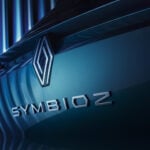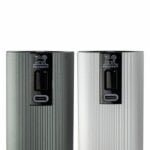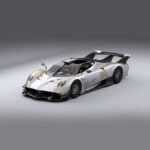The Romanian E-mobility Index study conducted by the consulting company Roland Berger shows that for every 100 new cars registered in Romania 7, they are electric or hybrid plug-ins.
The “Electromobility Index” shows a local electromobility market score of 54, up 10 points from the previous year, compared to a projected development potential of 100 in 2025. The Electromobility Index measures the development of the local electromobility market. electromobility, being determined on the basis of 12 key indicators.
According to the study, Romania continues to show a strong upward trend in terms of sales of electric vehicles, with a number of 8893 new purely electric and hybrid plug-in vehicles registered in 2021 – an increase of 131% compared to 2020. This development is determined by the constant improvement of the supply of models and the generous financial incentives offered by the state.
Major manufacturers are diversifying their portfolio of electric-powered vehicles and launching PHEV variants of popular internal combustion models, as well as new purely electric variants.
The local supply increased by about 30% compared to 2020, reaching a total of about 125 electrified models. Dacia Spring was by far the most popular model in 2021, accounting for almost half of all EV registrations, despite its relatively late launch, with the first deliveries in October. In the PHEV segment, SUVs and top of the range are the majority of new models.
Upload infrastructure is not optimized
In contrast, the supply of alternative mobility services has fallen for the first time since 2018, as the pandemic and legislative challenges have pushed some players out of the market, leading to a strengthening of the remaining position. All segments experienced a decline compared to the previous year, but in the car-sharing area the remaining players focused more on electric cars, keeping the total fleet at a level similar to the previous year.
According to analysts Roland Berger, the annual growth rate of public charging infrastructure has decreased to approx. 50%, compared to approx. 70% in previous years. However, the number of charging stations rose to about 1,000 units, with three out of four counties reaching more than ten charging stations each.
Importantly, the proportion of fast stations is constantly growing, reaching one in three existing stations.
The development of the ultra-fast ones (with a charging speed of over 150 kW), non-existent in Romania before 2020, is gaining momentum. However, their number remains limited (about 1% of the total) mainly due to the currently low needs for very high loading speeds and the costs associated with such stations.
Increased appetite for more sustainable vehicles has led authorities to triple the budget for the government’s Rabla Plus incentive program (including an additional allocation in August) to € 123 million. For the first time since its launch, all funds have been completely exhausted by the end of the year.

 Renault’s compact family SUV will be called the Symbioz -.
Renault’s compact family SUV will be called the Symbioz -. Peugeot and its new range of salt and pepper mills -.
Peugeot and its new range of salt and pepper mills -. A new Uber Eats ad is being criticized for showing a peanut allergy -.
A new Uber Eats ad is being criticized for showing a peanut allergy -. Pagani announces new track-based hypercar, known as the Huayra R Evo -.
Pagani announces new track-based hypercar, known as the Huayra R Evo -. Introducing the Oscars in the Best Casting category -.
Introducing the Oscars in the Best Casting category -.